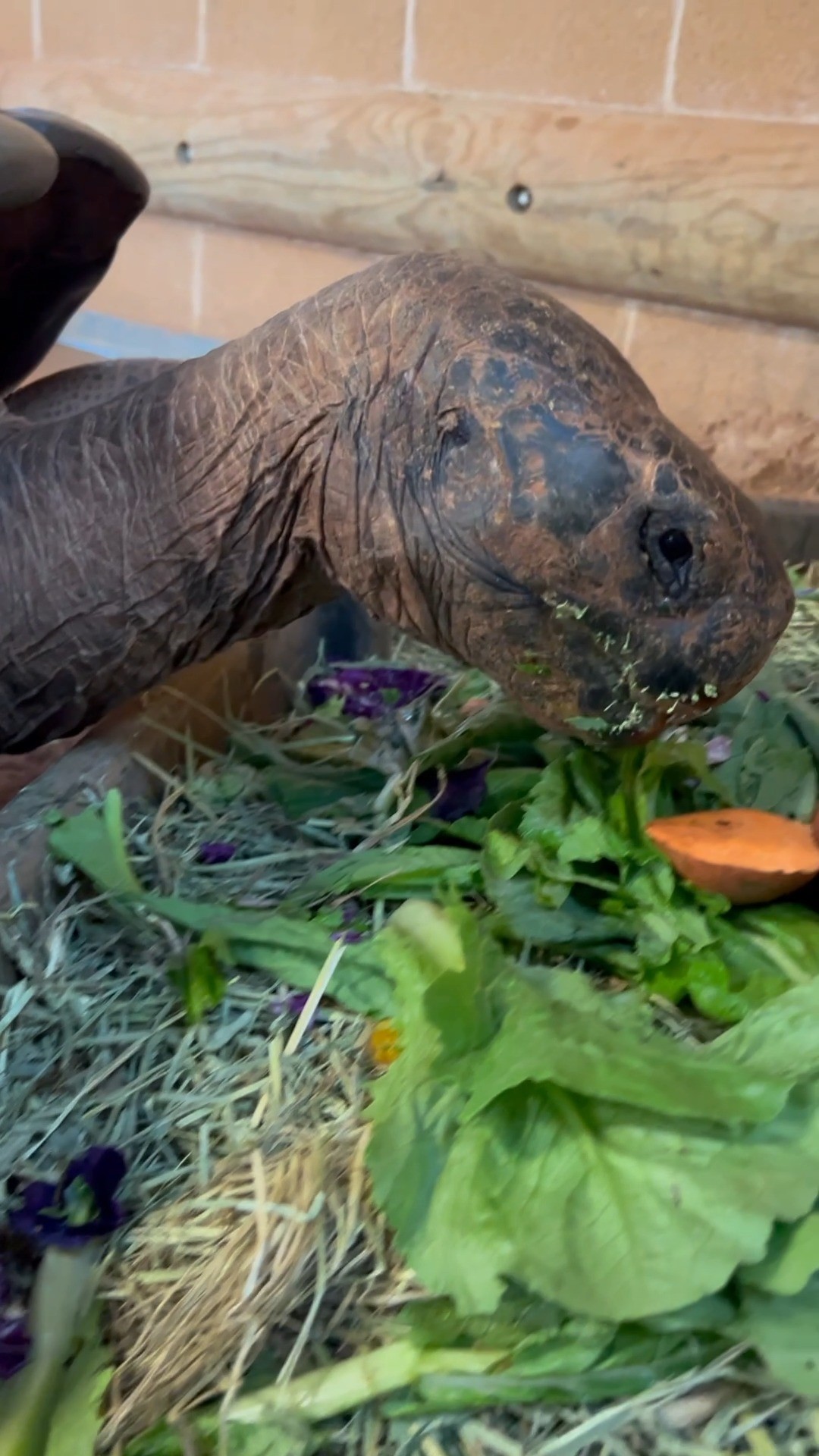- The unique dietary habits of Galapagos tortoises, highlighted by their distinctive crunching sounds and feeding behavior.
- The ecological significance and conservation status of Galapagos tortoises, including efforts to protect and preserve their habitats.
- The role of zoos in the care and management of Galapagos tortoises, focusing on the ethical considerations and benefits of captivity.
- The anatomy and physiology of Galapagos tortoises, emphasizing their adaptations that enable survival in their natural habitats.
- An overview of the ongoing research and scientific studies aimed at understanding Galapagos tortoises and their behavior.
Exploring the dietary habits and sounds of the Galapagos tortoise provides an intriguing glimpse into the survival strategies of these ancient creatures. The crunching sound, as highlighted in the popular Instagram video of "Please enjoy 30 seconds of Galapagos tortoise crunching to end your day," is not just an auditory experience but a window into the feeding behavior of these magnificent reptiles. Their diet primarily consists of fibrous vegetation such as grasses, leaves, and cacti. The tortoises’ jaws are designed to exert significant pressure, allowing them to break down tough plant material efficiently, which results in the characteristic crunching sound.
The feeding habits of Galapagos tortoises play an essential role in their ecosystems. As herbivores, they help maintain the balance of vegetation in their habitats. Their diet selection influences the plant diversity in their environment, as they contribute to seed dispersal through their feces, aiding in the growth of various plant species. This interaction with their ecosystem highlights the importance of their dietary behavior in maintaining the ecological health and biodiversity of the Galapagos Islands.
Conservation efforts for Galapagos tortoises are crucial due to their vulnerability to human activities, invasive species, and habitat destruction. Classified as vulnerable on the IUCN Red List, these tortoises require continuous protection and conservation strategies to ensure their survival. Conservationists focus on habitat restoration, eradication of invasive species, and strict regulation of human activities within the Galapagos Islands. Breeding programs and research initiatives aim to bolster populations and reintroduce tortoises to areas where they have been depleted.
Zoos play a significant part in the conservation and management of Galapagos tortoises. These institutions provide a sanctuary for tortoises, offering them a safe environment free from natural and human-induced threats. Within these controlled settings, zoologists and caregivers can monitor health, nutrition, and behavior closely. Ethical considerations are paramount in the management of captive Galapagos tortoises, ensuring that enclosures mimic natural habitats as closely as possible, both in diet and physical environment. The educational role of zoos cannot be understated, as they raise public awareness about the importance of conservation and the challenges faced by wildlife around the globe.
The anatomical and physiological characteristics of Galapagos tortoises are the keys to their evolutionary success. Their large, domed shells provide not only protection but also support for their slow, steady lifestyle. Weighing up to 500 pounds, these tortoises have sturdy legs adapted for traversing the rugged terrains of the Galapagos Islands. One of their most significant adaptations is their ability to survive for extended periods without food or water, thanks to their slow metabolism and efficient food storage within their bodies. These adaptations have allowed them to thrive and endure in the harsh conditions of their remote island habitats.
Research plays a critical role in expanding our understanding of Galapagos tortoises. Scientists engage in various studies, including behavioral ecology, population dynamics, and genetic diversity. Technological advancements, such as GPS tracking and drone monitoring, allow researchers to gather data on tortoise movements and interactions in greater detail. Understanding the genetic makeup of different tortoise populations aids in identifying distinct lineages and developing targeted conservation strategies. Collaborative international efforts ensure that research findings contribute directly to conservation policies and practices.
Education and awareness are pivotal in the global effort to conserve Galapagos tortoises and their habitats. Initiatives such as the use of digital media, like the "Please enjoy 30 seconds of Galapagos tortoise crunching to end your day" video, engage and inspire individuals worldwide to take an interest in wildlife conservation. These platforms serve as tools to disseminate information about the importance of preserving biodiversity and the intricate balance of ecosystems that species like the Galapagos tortoise help maintain.
The story of Galapagos tortoises is not just a tale of a particular species but a reflection on the broader need for environmental stewardship. Our actions, guided by scientific knowledge and ethical responsibility, have the potential to shape the future of these ancient reptiles and their habitats. Protecting the Galapagos tortoise serves as a reminder of the critical importance of biodiversity and the interconnectedness of life on Earth.
As we appreciate the simple yet profound moment captured in the "Please enjoy 30 seconds of Galapagos tortoise crunching to end your day" video, we are reminded of our responsibility to protect these creatures and their habitats. Through conservation, education, and ongoing research, we can contribute to the continued existence of Galapagos tortoises for future generations to enjoy and learn from. The collective effort to understand and preserve these iconic animals underscores the vital role each of us plays in maintaining the natural world.
*****
Source Description
Please enjoy 30 seconds of Galapagos tortoise crunching to end your day 💚🐢

